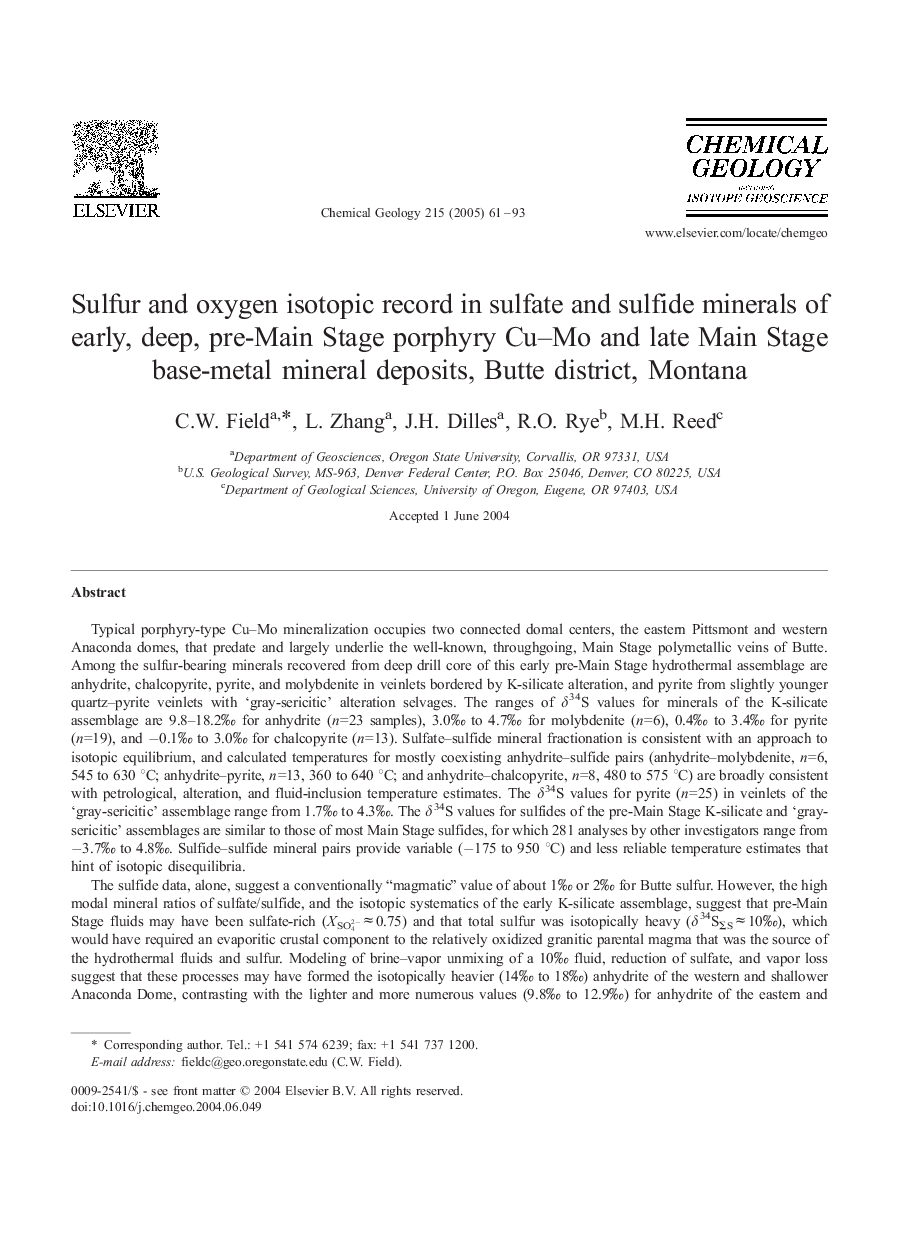| Article ID | Journal | Published Year | Pages | File Type |
|---|---|---|---|---|
| 9529209 | Chemical Geology | 2005 | 33 Pages |
Abstract
The sulfide data, alone, suggest a conventionally “magmatic” value of about 1â° or 2â° for Butte sulfur. However, the high modal mineral ratios of sulfate/sulfide, and the isotopic systematics of the early K-silicate assemblage, suggest that pre-Main Stage fluids may have been sulfate-rich (XSO42ââ0.75) and that total sulfur was isotopically heavy (δ34SΣSâ10â°), which would have required an evaporitic crustal component to the relatively oxidized granitic parental magma that was the source of the hydrothermal fluids and sulfur. Modeling of brine-vapor unmixing of a 10â° fluid, reduction of sulfate, and vapor loss suggest that these processes may have formed the isotopically heavier (14â° to 18â°) anhydrite of the western and shallower Anaconda Dome, contrasting with the lighter and more numerous values (9.8â° to 12.9â°) for anhydrite of the eastern and deeper Pittsmont Dome. Such a process might also have been able to produce the sulfide isotopic compositions of the younger 'gray-sericitic' and Main Stage zones, but the limited data for sulfates permit δ34SΣS compositions of either 2â° or 10â° for these later fluids. Oxygen isotopic data for late Main Stage barite (â0.3â° to 12.4â°, n=4 samples) confirm variable meteoric water contributions to these fluids, and the data support either the absence of, or limited, sulfate-sulfide isotopic equilibrium in these samples. The δ34S values for sulfate-sulfur of barite are markedly variable (4.4â° to 27.3â°), and the unusual 34S depletion indicates sulfur formed by oxidation of H2S.
Related Topics
Physical Sciences and Engineering
Earth and Planetary Sciences
Geochemistry and Petrology
Authors
C.W. Field, L. Zhang, J.H. Dilles, R.O. Rye, M.H. Reed,
